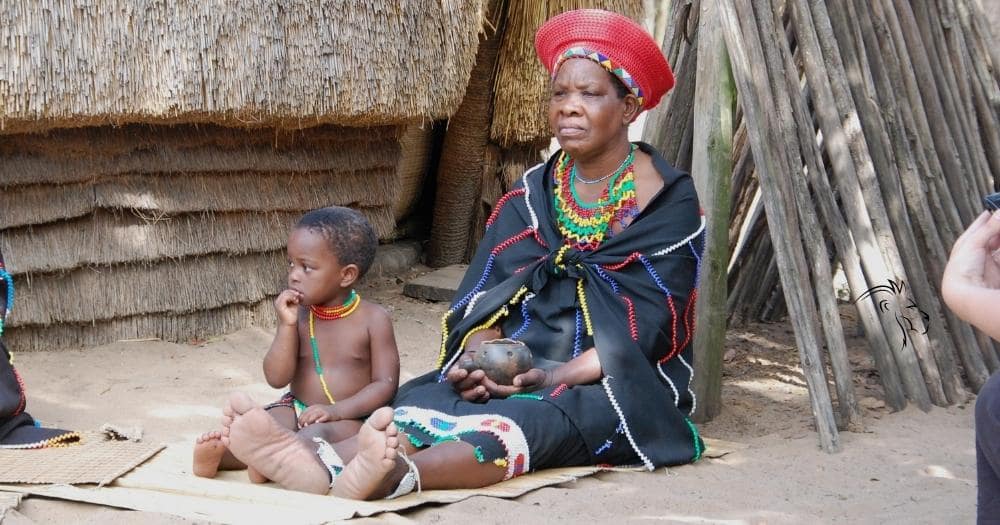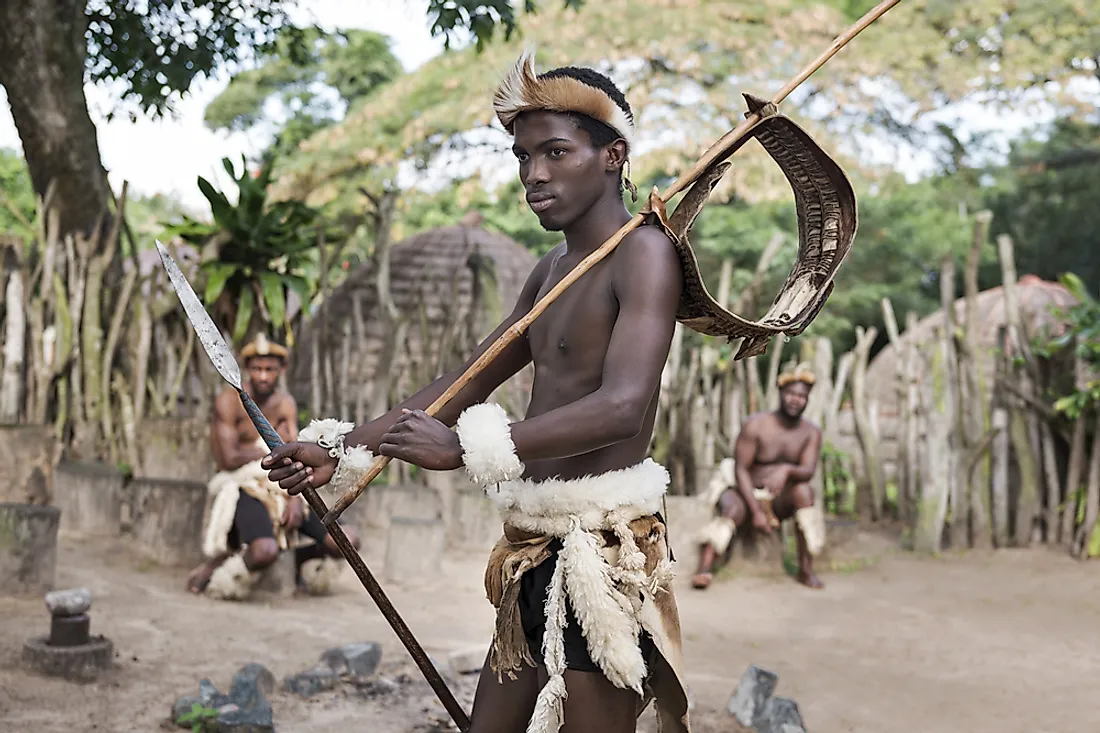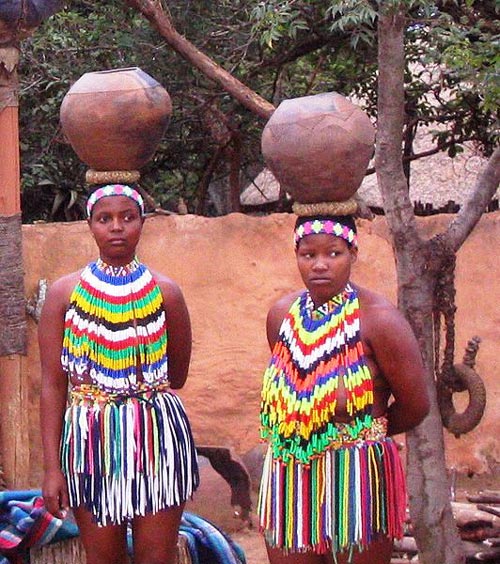Environmental Adaptions
No.1
The Zulu Tribe is located in Kwazulu-Natal Province in South Africa and is known to be divided between subtropical climate and controlled weather. There are occasional showers throughout the year, including summer that range from intense downpour or the normal precipitation, so I'd say the weather in the area is agreeable to the people. Geographically, Kwazulu-Natal stands on mountainous terrain where there are lots of rocky slopes. From my online search, there wasn't much information on hardships in weather and after looking through various sources, I don't think there are any physical stress factors that might make it difficult for the Zulu tribe to maintain homeostasis. On the other hand, the Andean tribe located high up in the Andes mountains are more "vulnerable" due to their geographic location. The people living on the Andes mountain face extremely high altitudes where frost is sure to come down by night fall. Daylight is a different story to the Andean people because during the day, the weather can get really hot so there is a constant change in climate from extremely hot to extremely cold. Not to mention that living high up on the mountains means being exposed to the ultra-violet radiation all day long.
No.2
The daily life of the Zulu tribe is spent mostly outdoors. For the Zulu, nature is very important to them so from a very young age, they are placed outside so they can get accustomed to the environment. Depending where exactly one is located, Kwazulu-Natal is a coastal or highland environment so exposure to the sun is always present. Thus, the Zulu tribe have more melanin resulting in a darker complexion. This physical asset, allows less damage on skin caused by UV rays.
Such is a similar case with the Andean Indians that live in the Andes mountains. Due to the fact that they live at a higher altitude, with a greater exposure to the sun, these people also have a darker complexion that helps block out some of the dangerous rays. The most interesting physical adaption, however, is the change in heart muscles, allowing these people to live in a place where oxygen is not easily grasped.
Since the Zulu live in a generally hot area and having to move around all day long means using/making loose clothing that don't interfere with the daily tasks while also keeping cool. We already know that their dark complexion helps protect them from the sun which is why, as seen in the photos, both men and women wear clothing that don't cover much skin.
In contrast, the Andean Indians must wear heavy clothing pieces that not only keep them warm from the biting cold but also protects them from the sun. Much like the photo presented, they also wear hats that protect their ears from the frost in the air as well. Many of their clothing pieces are made by the wool from sheep, alpacas, or llamas which help retain the warmth from their body better.
No.4
I'd say that putting a label like a race can get tricky at times because one might not know what race they fall under and although there are ethnicities to help place you in a certain group, races is limited. For the Zulu tribe, I'd say that their race would be "Black or African American" since the population derives from South Africa. When it comes to the Andean Indians however, I have to think a bit more in regards to what race they fall under. The initial race I'd play them under would be "American Indian or Alaska Native" I'd describe them under this race first since they are "original people of South America" but I'd also add in "Asian" because there have been some recordings of the Andean Indians to have South Asian descents.
No.5
Comparing cultures based on their cultural/physical adaptions and their race are both useful and serve its purpose of placing them in a certain "group". Looking over my post and the articles I've found, I'd say that describing a population from a cultural and physical perspective is incredibly more informative and a better method for cultural anthropologists. If cultural anthropologists are constantly asking questions then looking into physical adaptions can answer a lot of questions. An example of this would be by questioning physical adaptions and what that has to do with the geographical setting of the population. Outward appearance can be an easy way to describe a population but that can only get you so far and won't give you insight on why they have lighter or darker skin color or why some are taller than others.
References
https://www.britannica.com/place/KwaZulu-Natal
https://www.britannica.com/topic/Andean-peoples
https://www.science.org/content/article/how-people-andes-evolved-live-high-altitudes
https://www.kuodatravel.com/the-traditional-fashion-of-andean-men/





Zulu:
ReplyDeleteCareful about confusing "weather" with "environment". The guidelines ask you to explore the *environment* of this culture, and that includes not just "weather" but other environmental factors, such as access to water, altitude, average temperatures, solar radiation, and native plants and animals. This exploration helps you identify the environmental stresses faced by this culture, such as heat stress and solar radiation stress.
Physical adaptations: The last couple of sentences there discussing darker skin tones is what I was looking for here as a response to solar radiation stress.
Cultural adaptations: Good discussion here, particularly noting that the more minimal clothing is only a possibility because of their darker skin tone.
Race: "Black" is a logical option. "African American" doesn't make sense because the Zulu live in South Africa, not America. We label black people as "African American" because they are Americans that originated in Africa.
Andean: Good discussion on the environmental stresses experienced by this culture.
Physical adaptations: Okay, yes, they have darker skin tones due to high levels of solar radiation. But can you explain further the issue with the heart muscle? Andean people can have enlarged right ventricles, but otherwise, the heart isn't much different from others. The primary variation of this population in response to high altitude environments is (a) a larger lung capacity and (b) more red blood cells and hemoglobin molecules.
Cultural adaptations: Great discussion of clothing as an adaptation to cold stress, and good connection with their use of alpaca's as an additional cultural adaptation.
Race: "Indian" or "indigenous indian" makes sense but these are not Alaskan, so that doesn't make sense. They do share an ancestry with Asian population but are not Asian themselves.
Summary: "Comparing cultures based on their cultural/physical adaptions and their race are both useful "
How is "race" useful? Understand that it is acceptable to say that it isn't useful at all.
I agree with the rest of your summary here, particularly your acknowledgement that using race really only "describes" a population. It has no explanatory power... but then again that raises again the question of what value there is in the use of race?
Race is not based in biology but is a social construct, based in beliefs and preconceptions, and used only to categorize humans into groups based upon external physical features, much like organizing a box of crayons by color. Race does not *cause* adaptations like environmental stress do, and without that causal relationship, you can't use race to explain adaptations. Race has no explanatory value over human variation.
Hi Jacqueline,
ReplyDeleteI really enjoyed your blog post. We used similar sources but you had a very eloquent way of explaining both tribes which is really good!! The organization of each topic and the photos you used are also perfect with how you explained everything! Good job on throughly explaining everything and making it easy to understand and read
After reading both sections 4 and 5, I can say that I came out with a newfound understanding that you helped me reach. For what it's worth, I agree that it can be difficult to label a group based on race because humans are all very different, and just because an individual looks like they belong to a specific race does not mean they actually do belong to said race.
ReplyDeleteWhere I'm not sure whether I agree is where you state "Outward appearance can be an easy way to describe a population but that can only get you so far and won't give you insight on why they have lighter or darker skin color or why some are taller than others" because outward appearance isn't always necessarily correlated with environment.